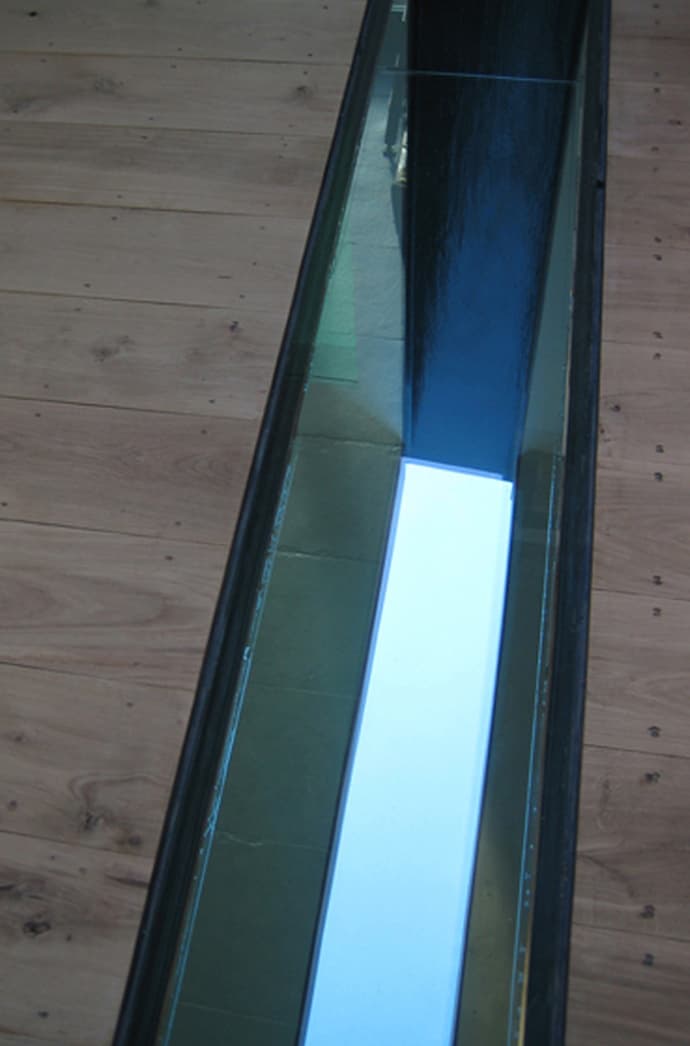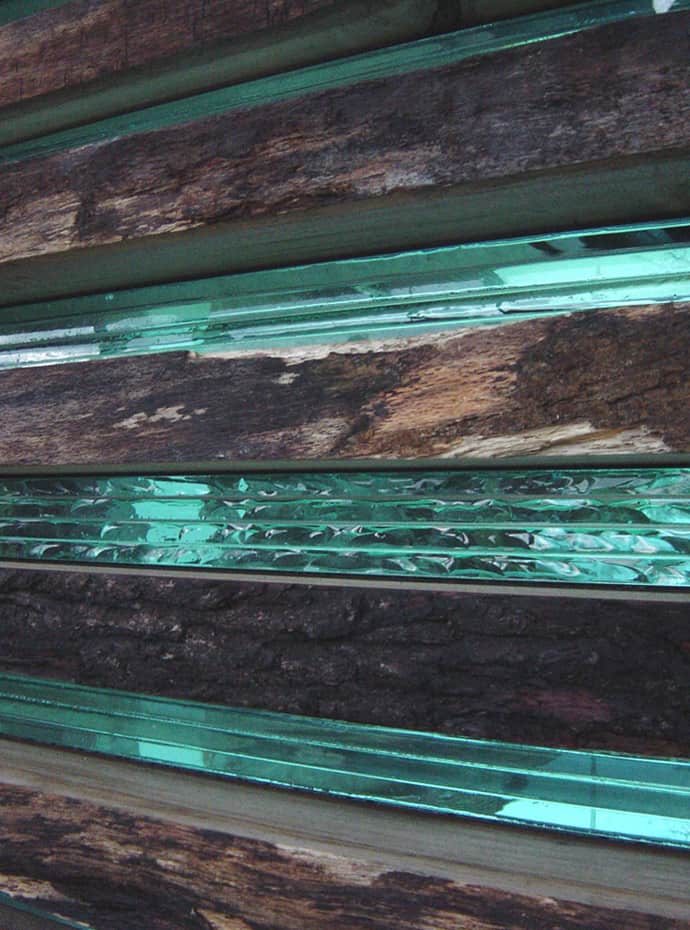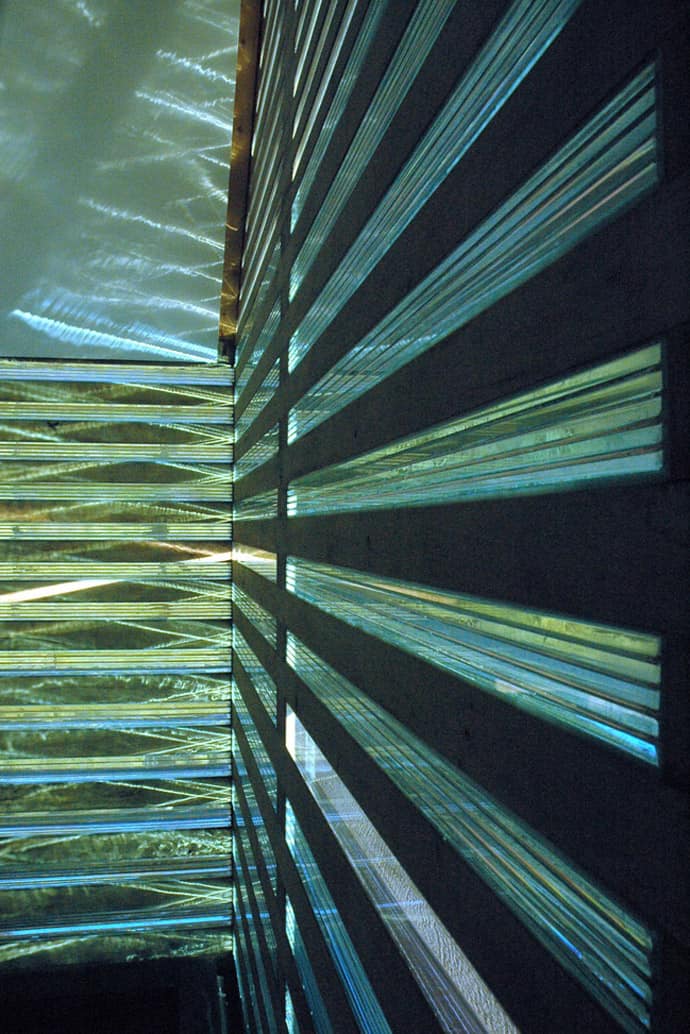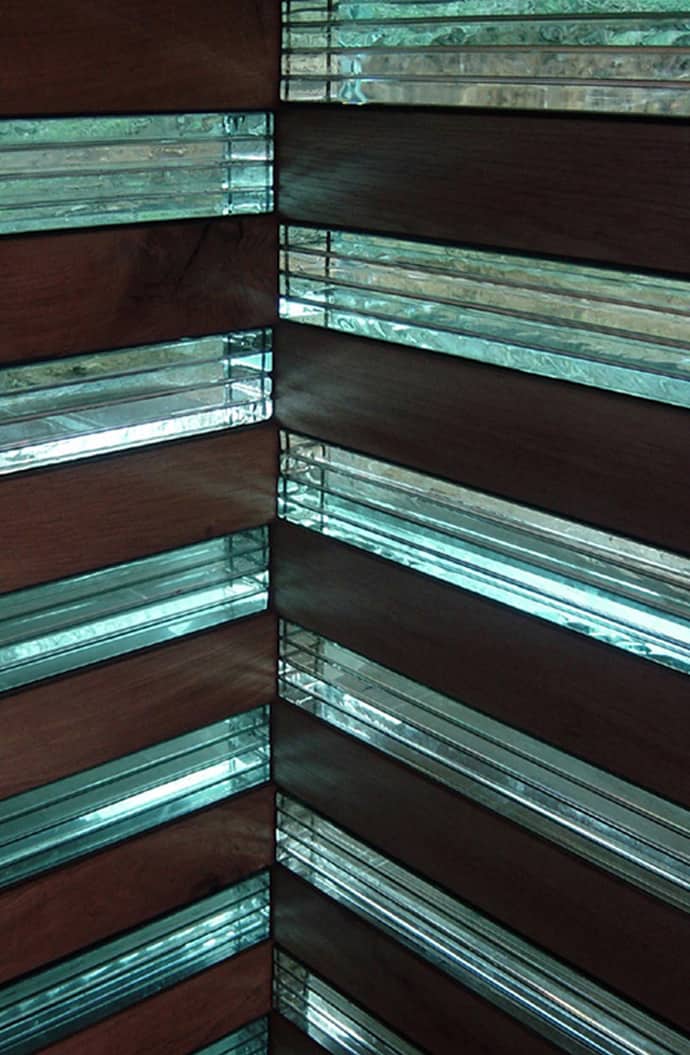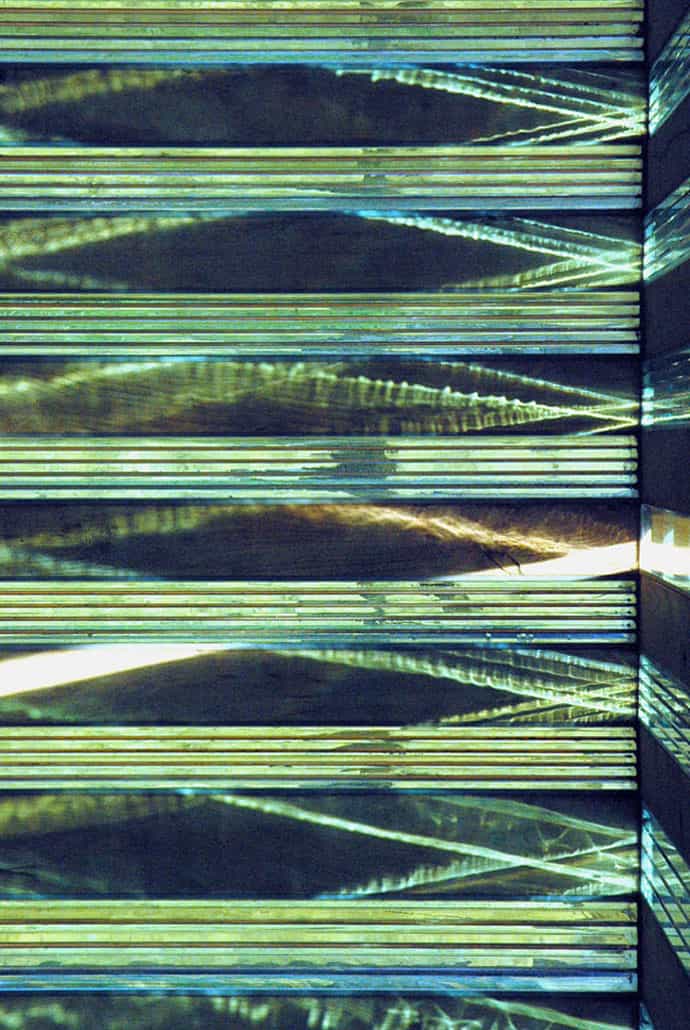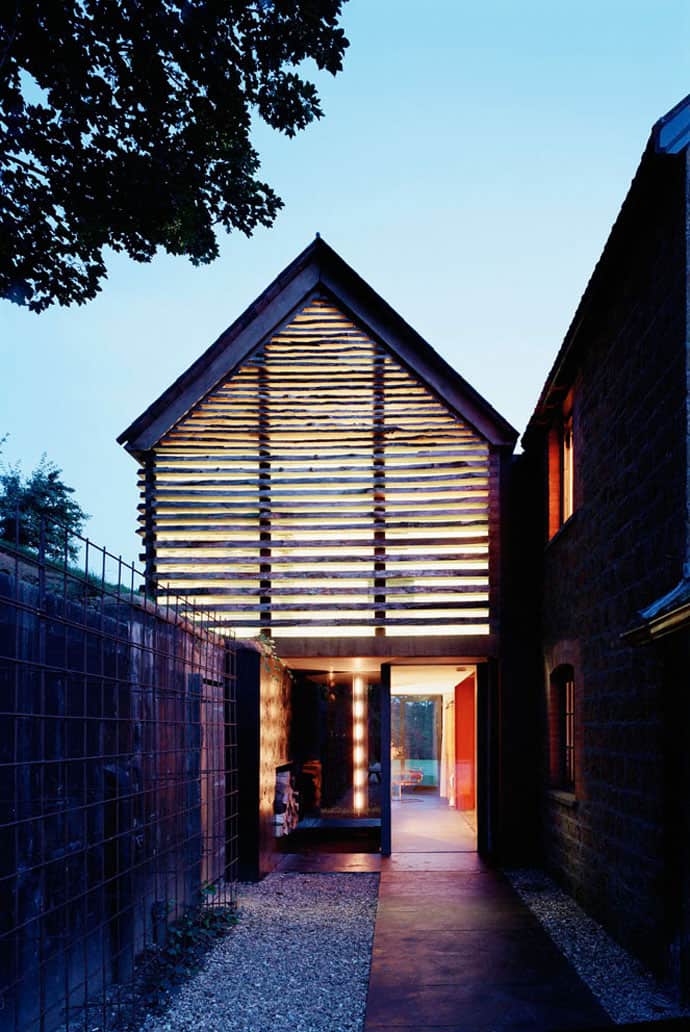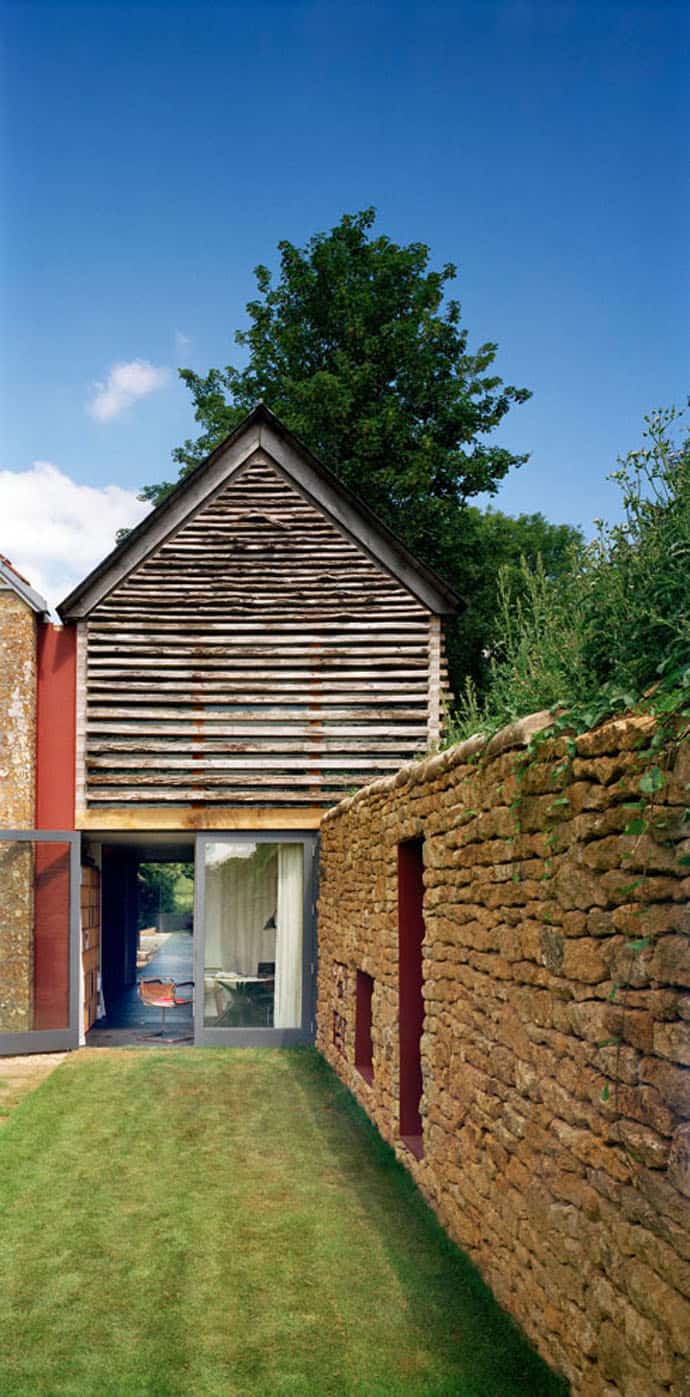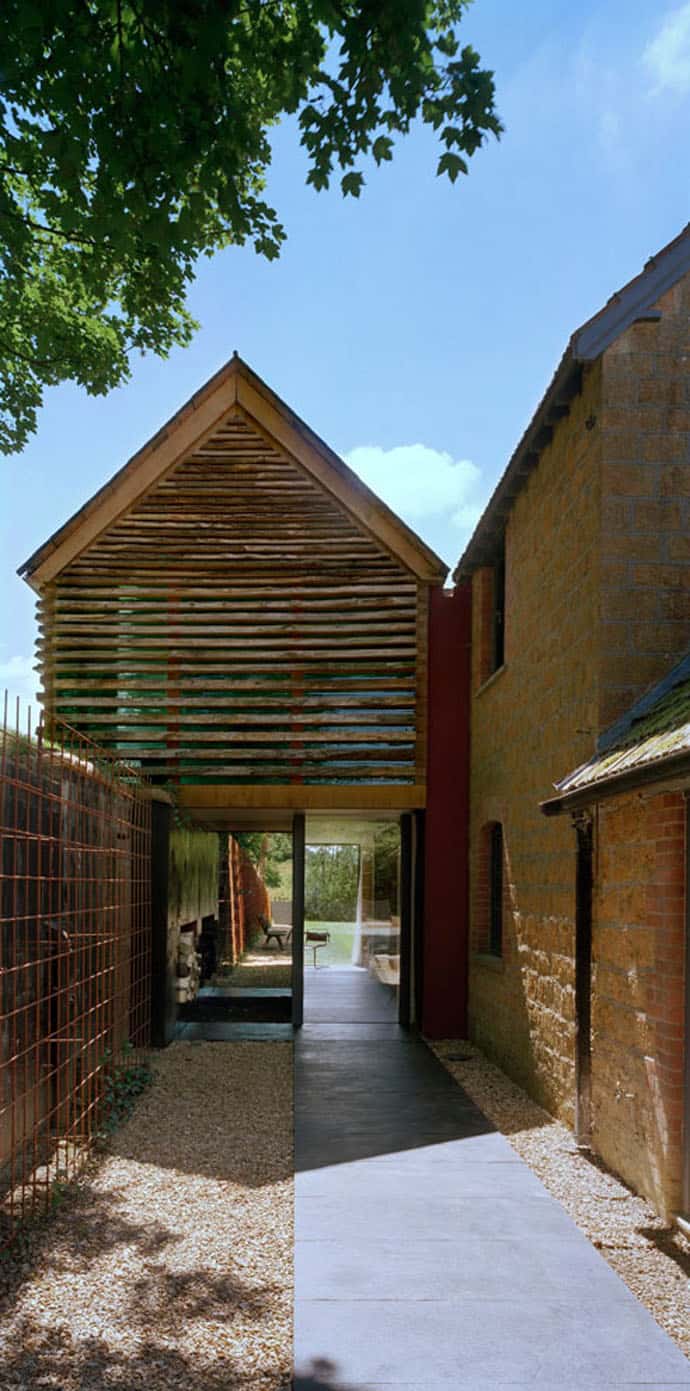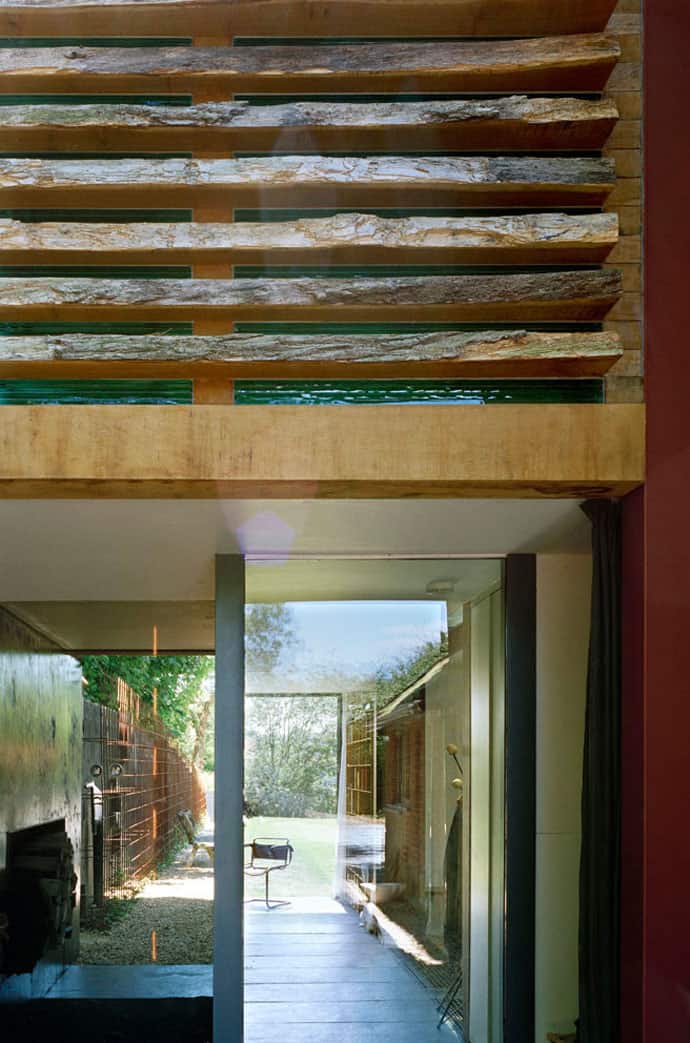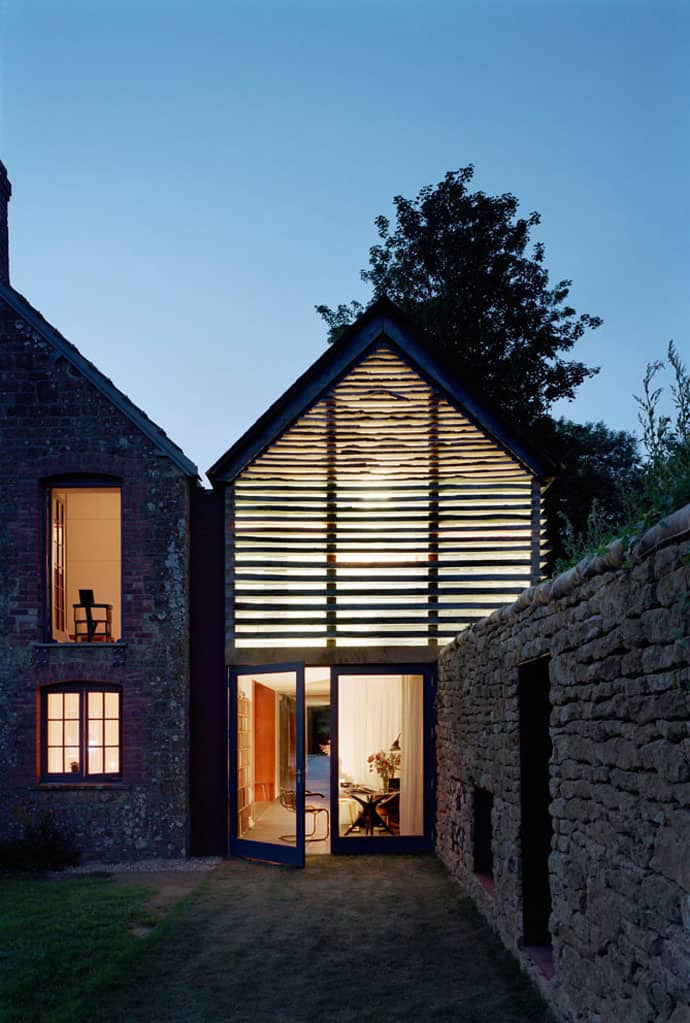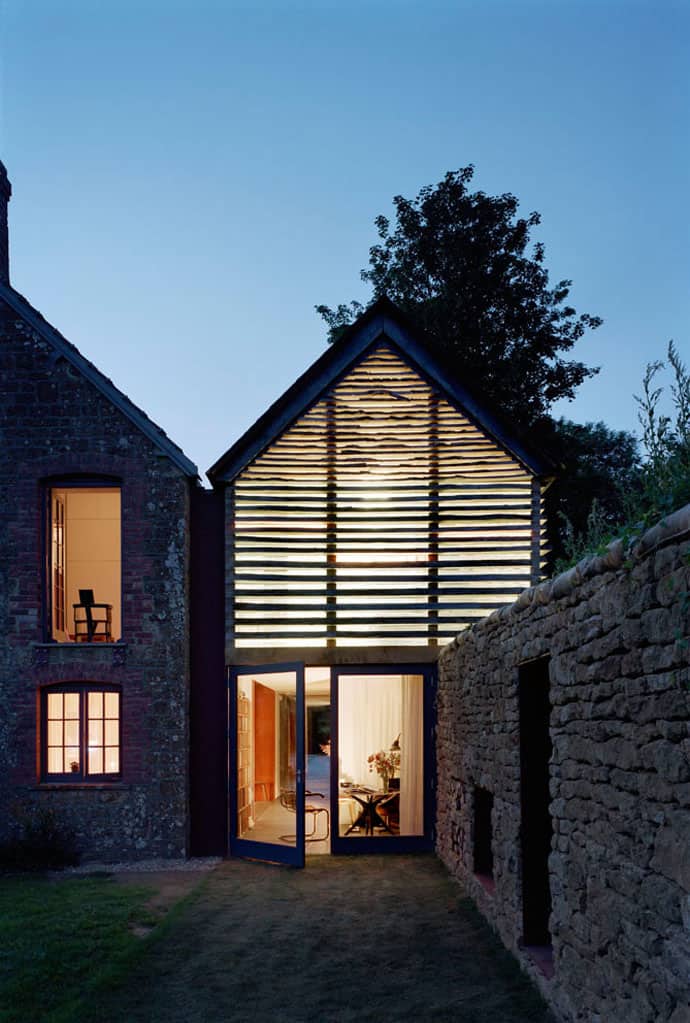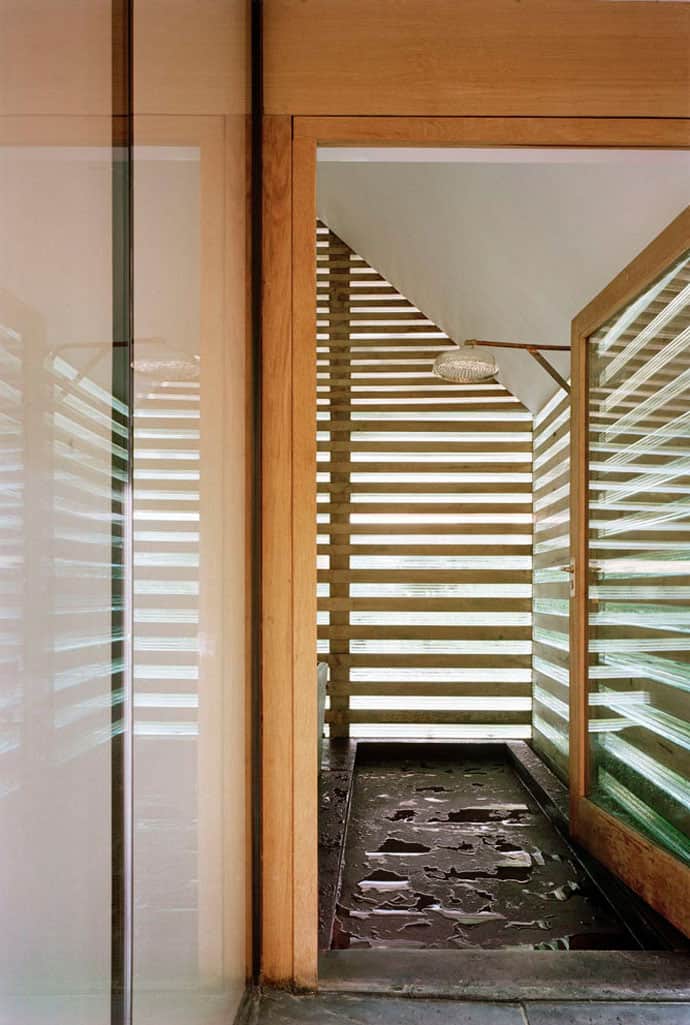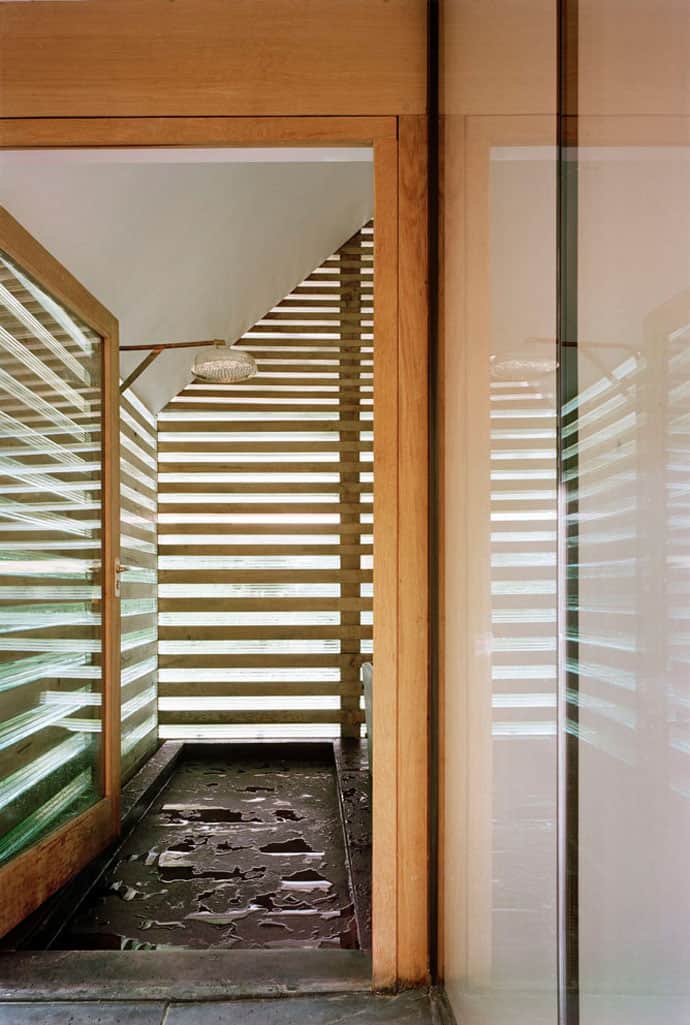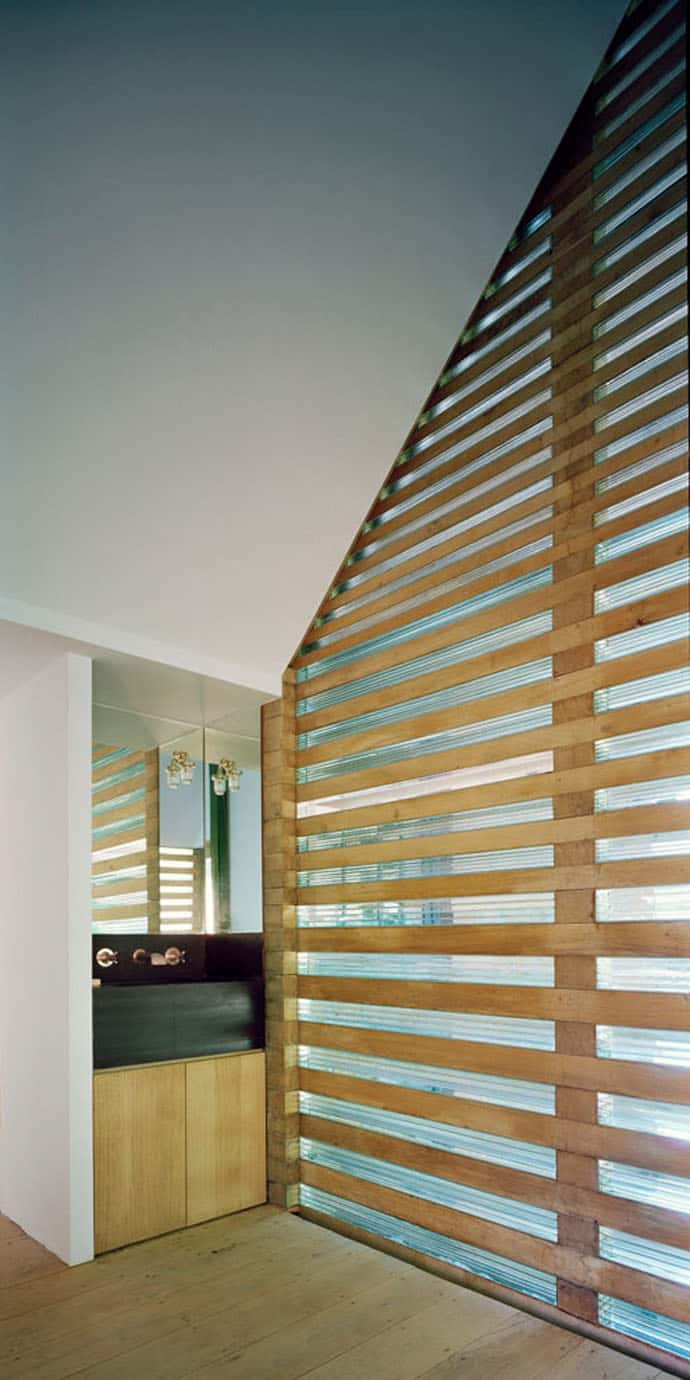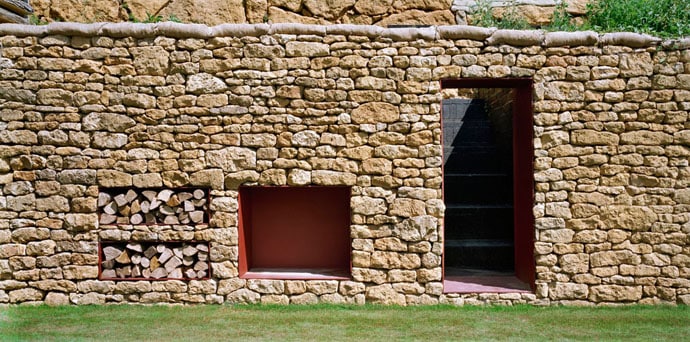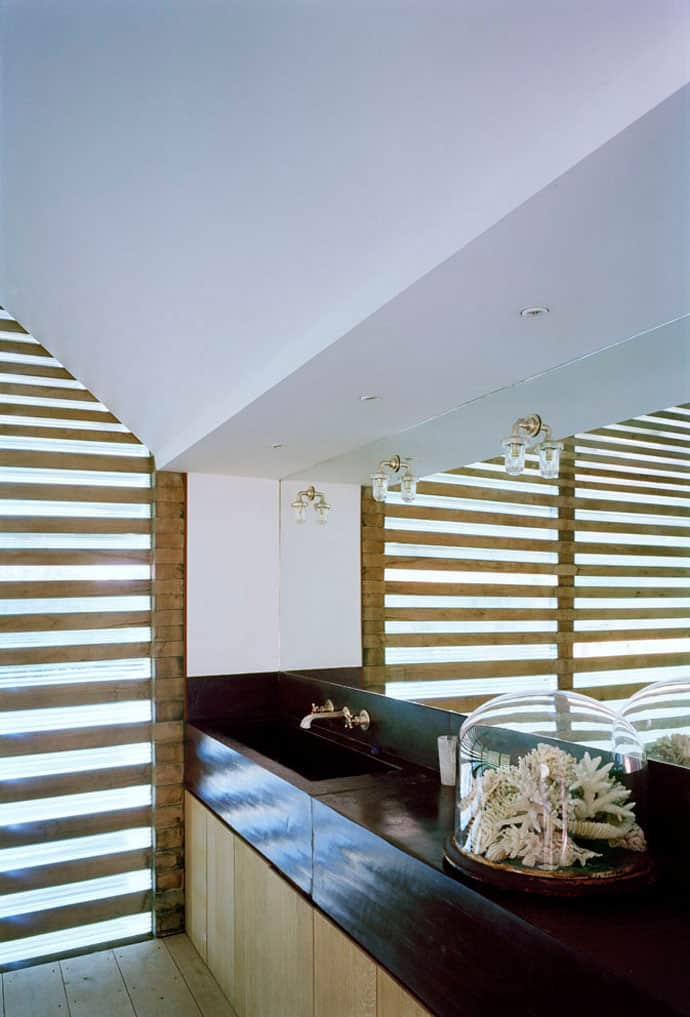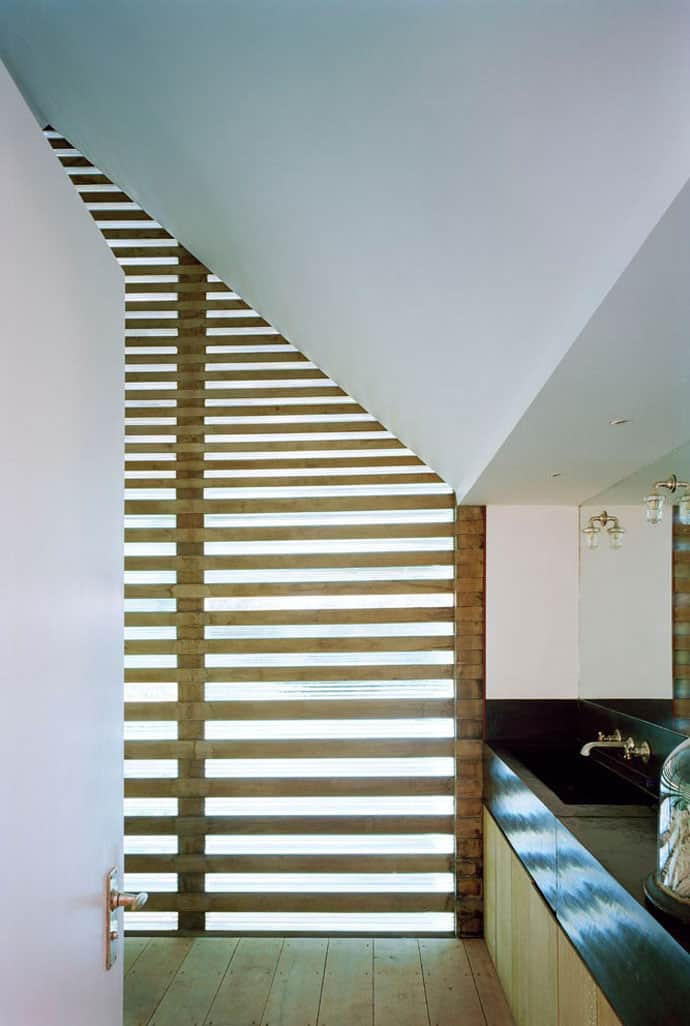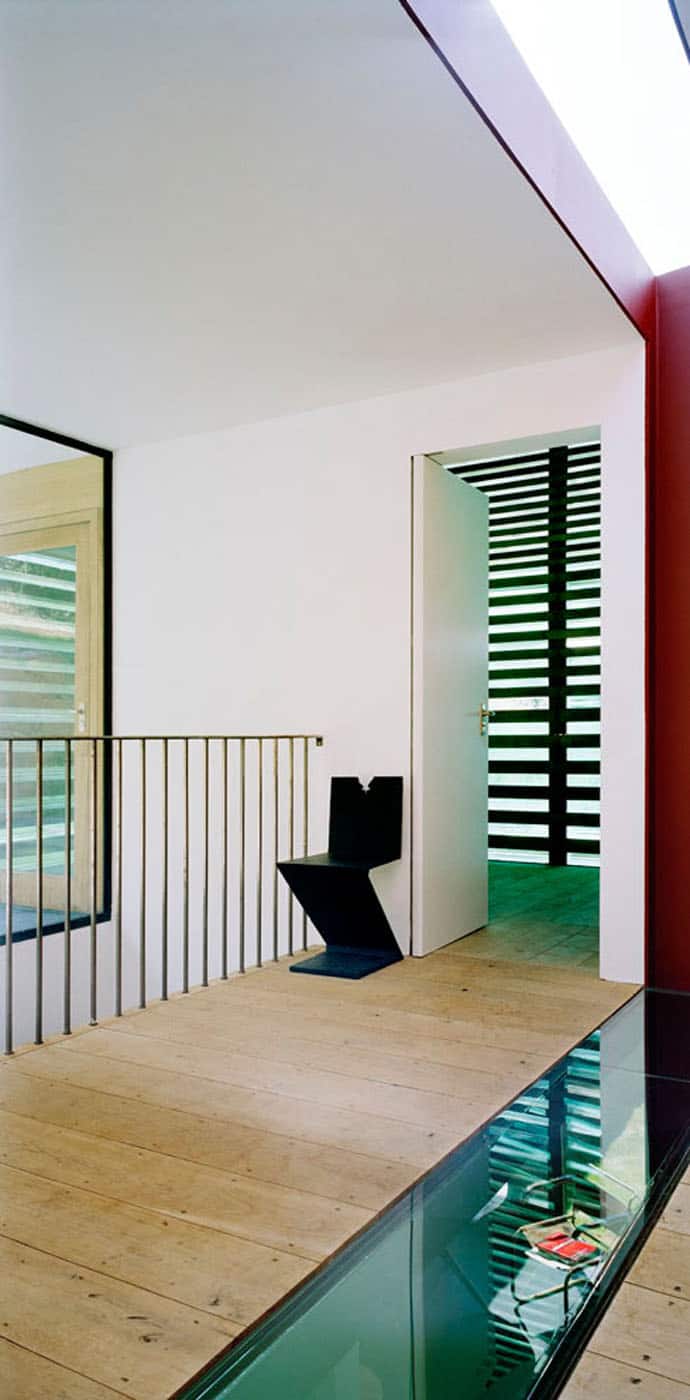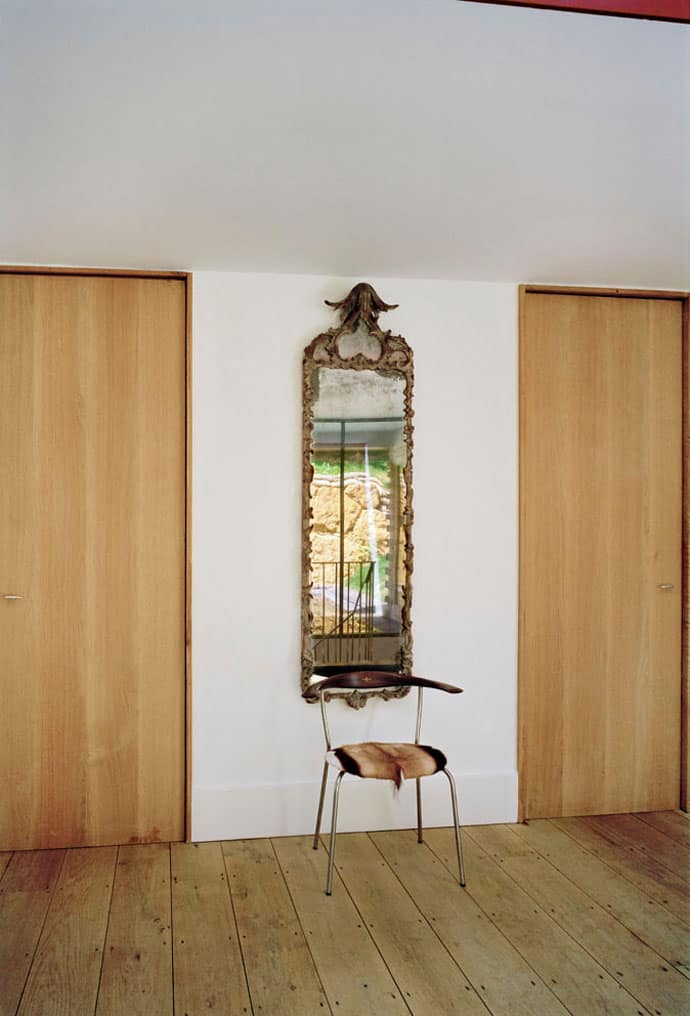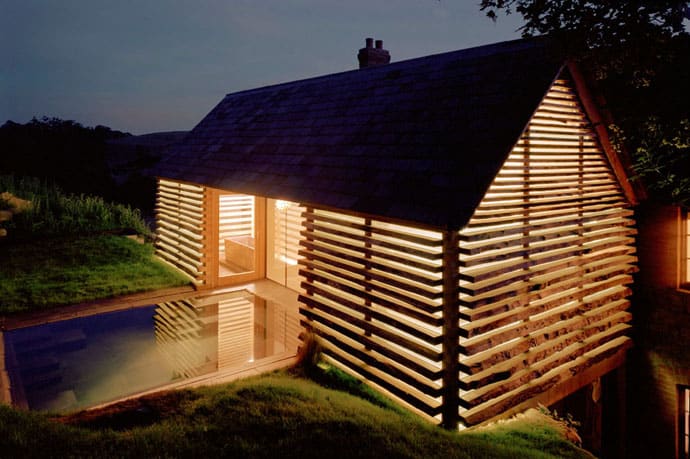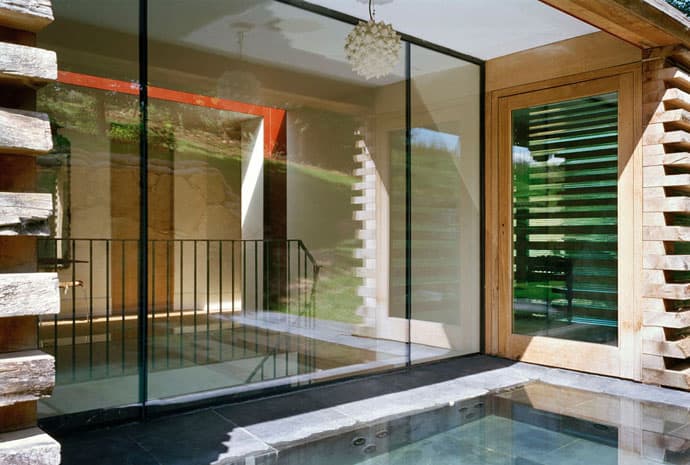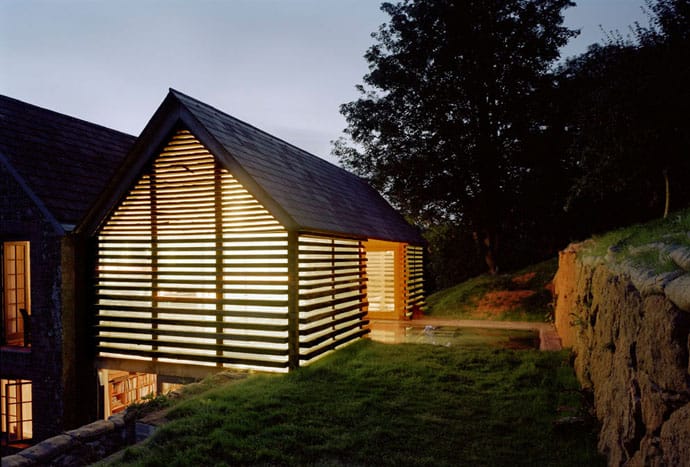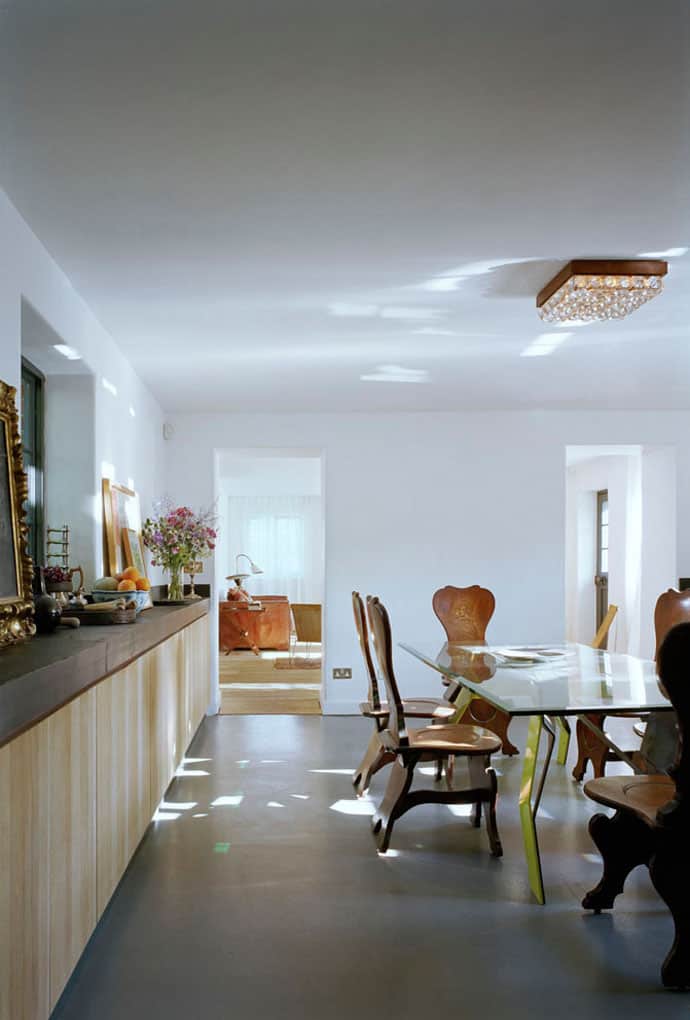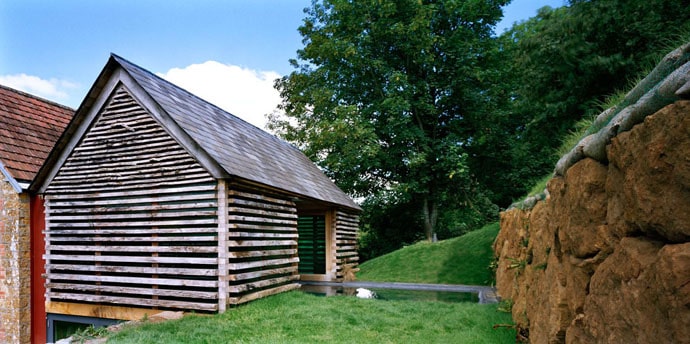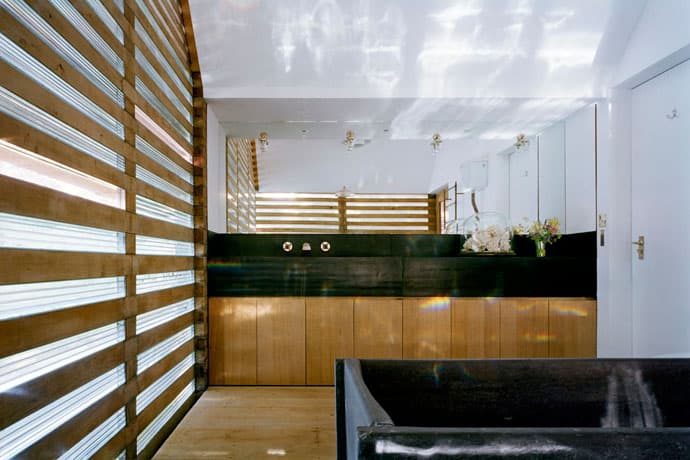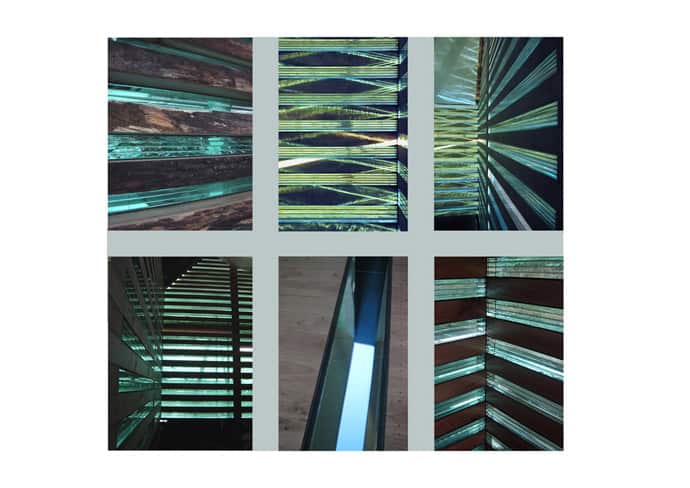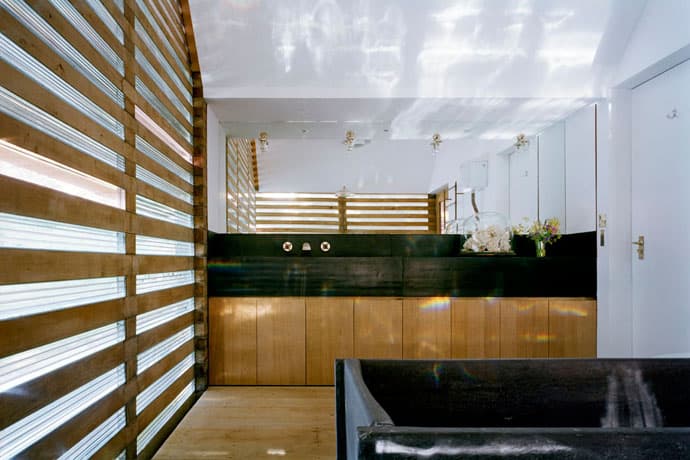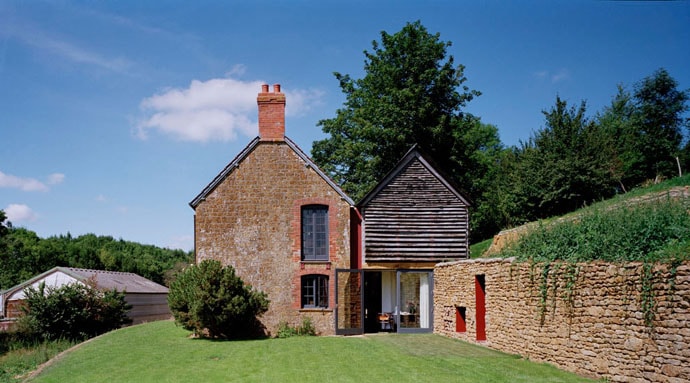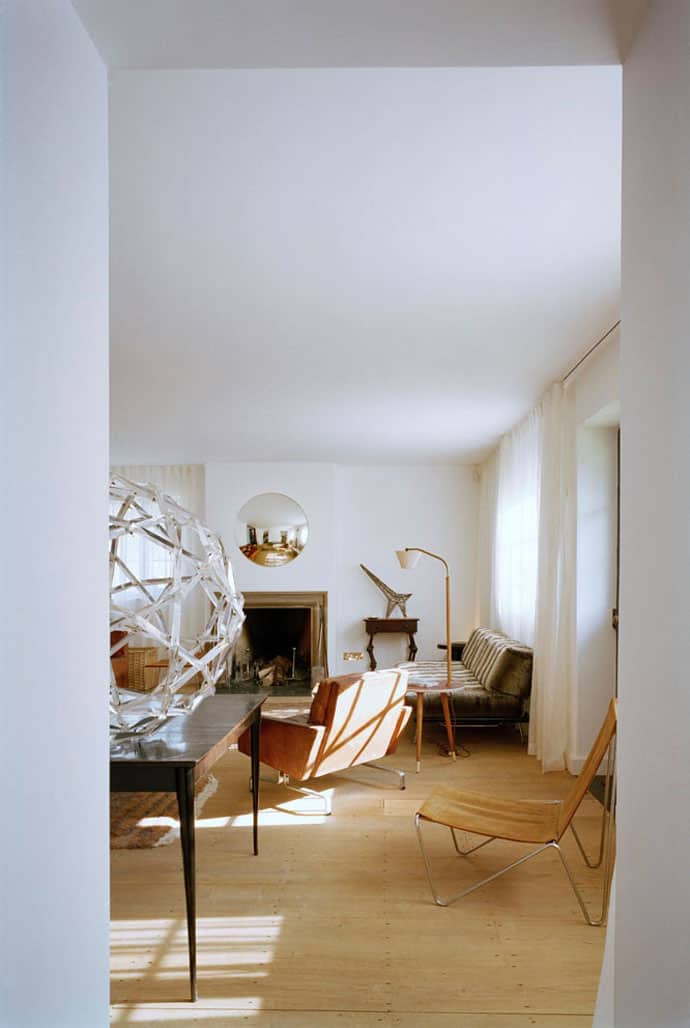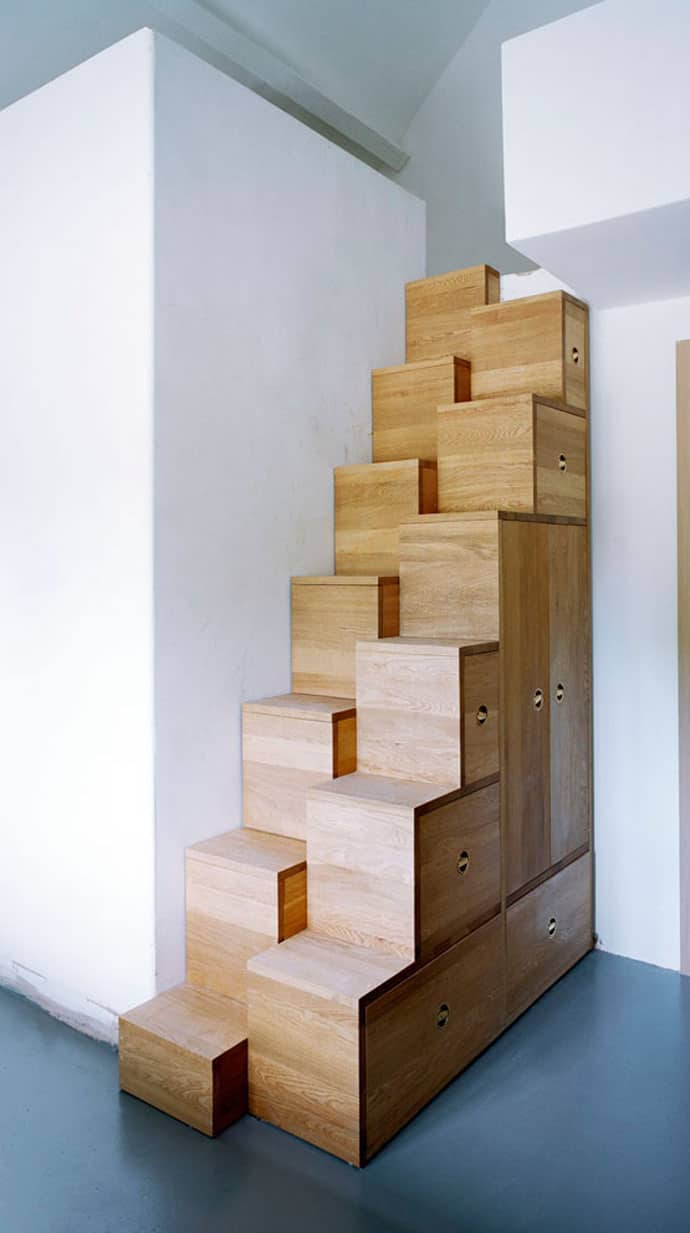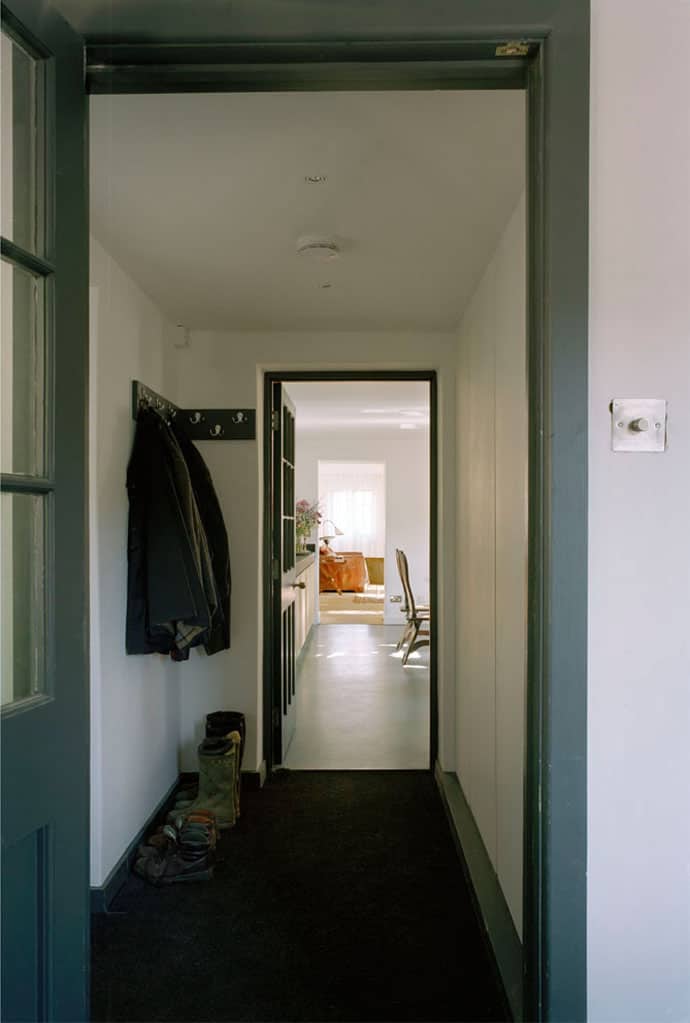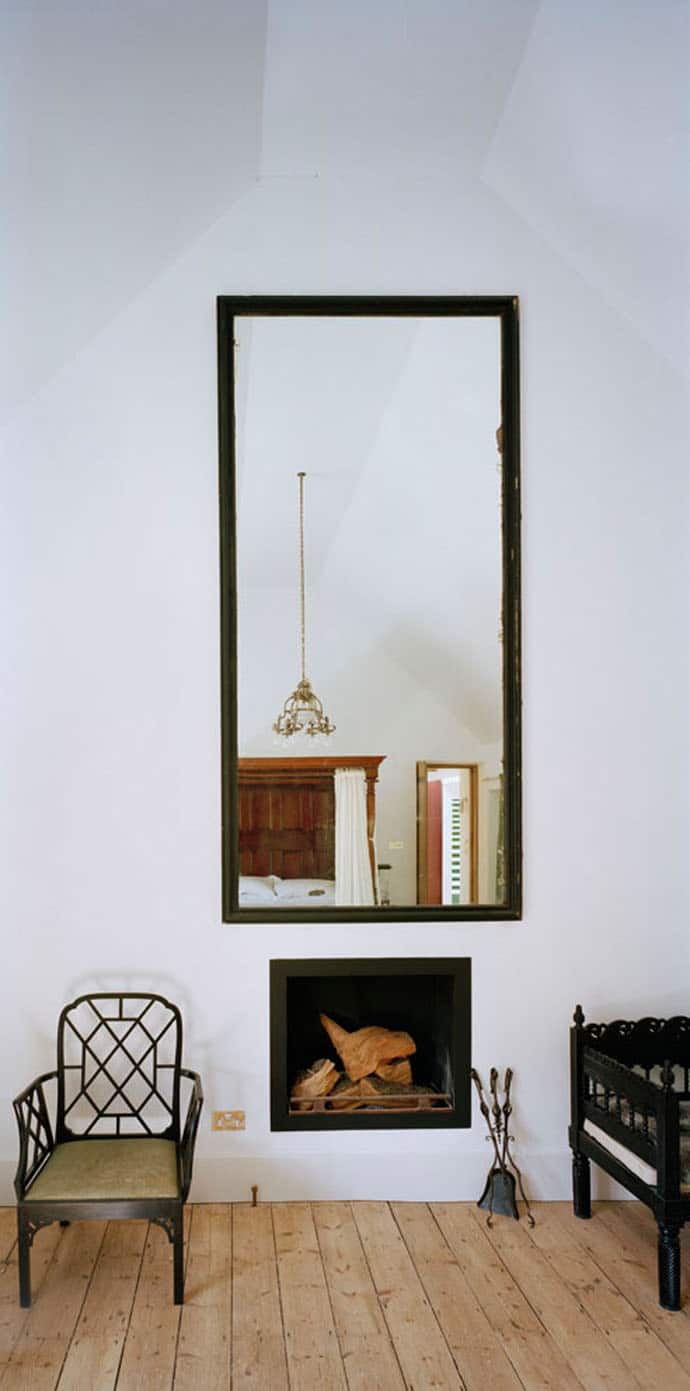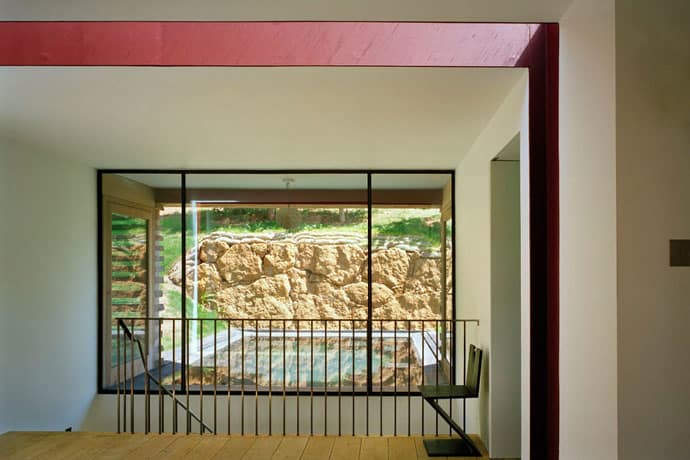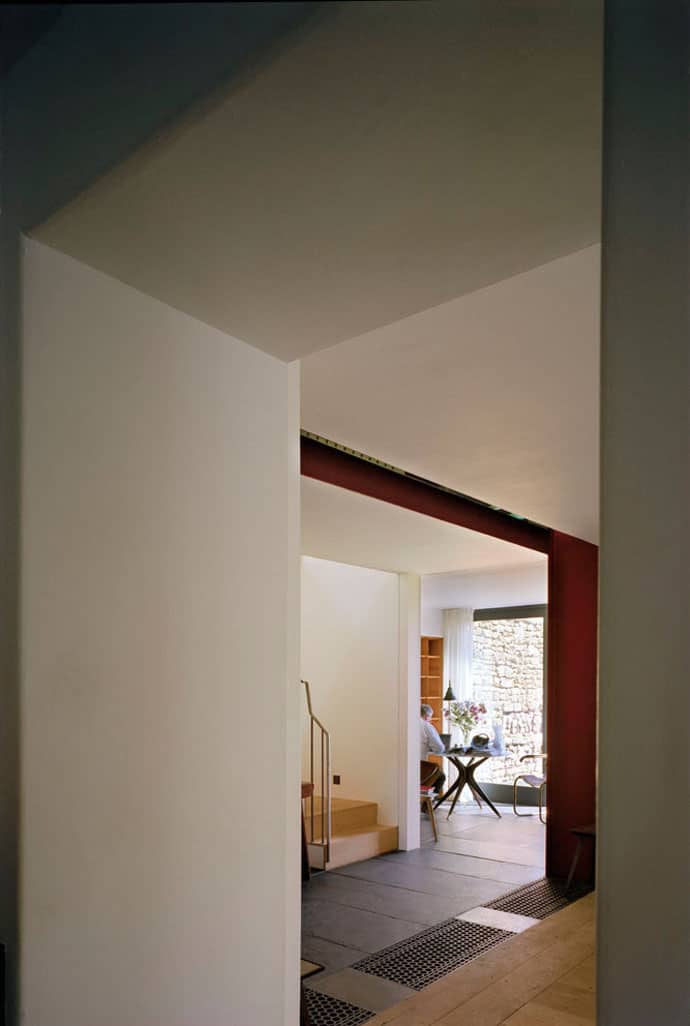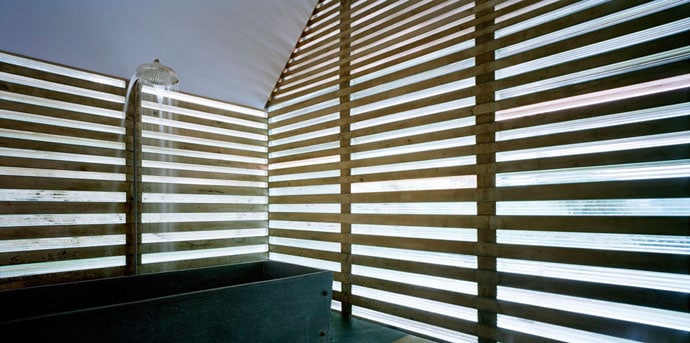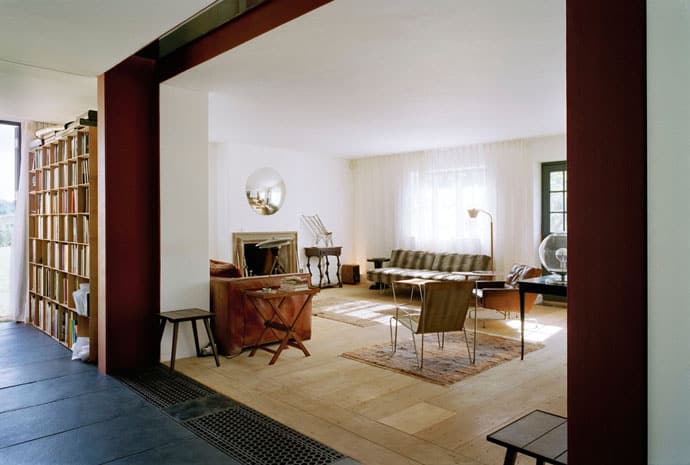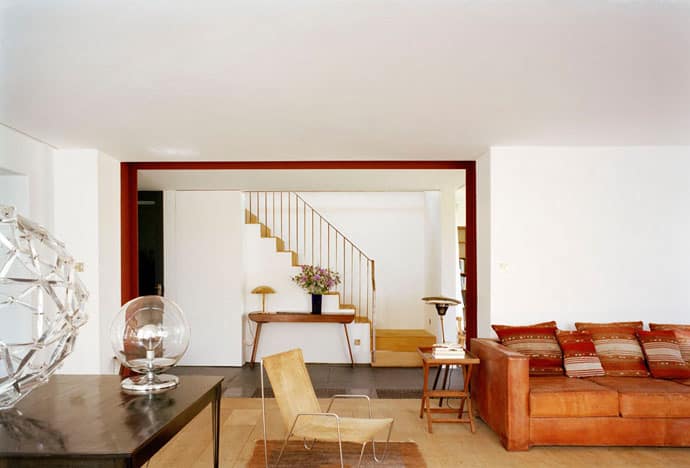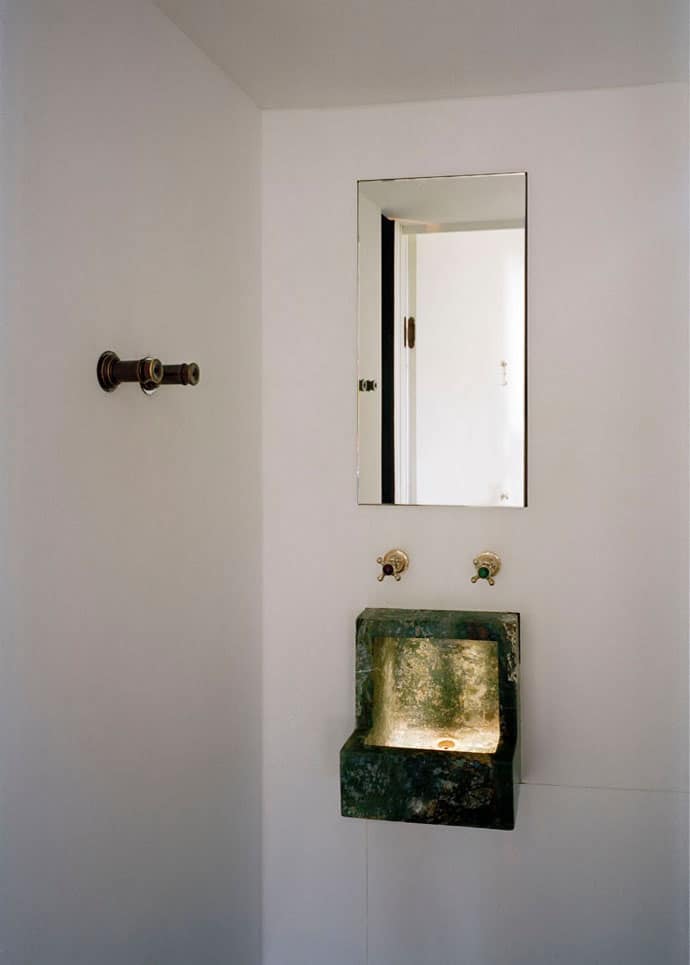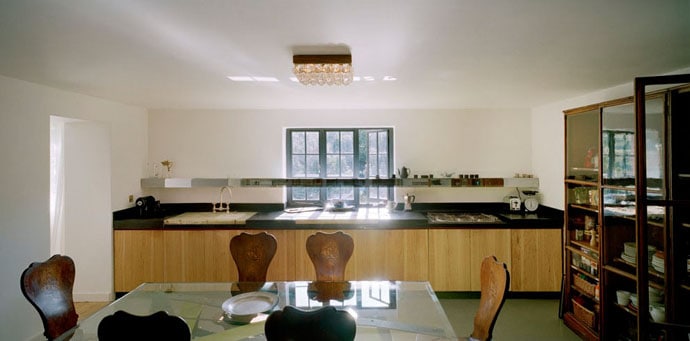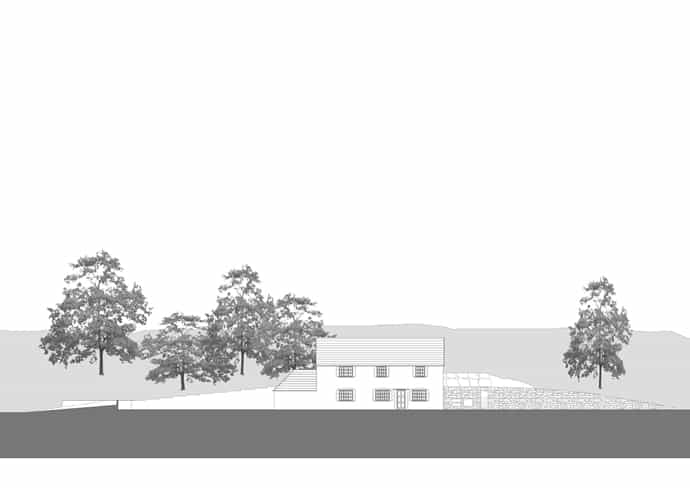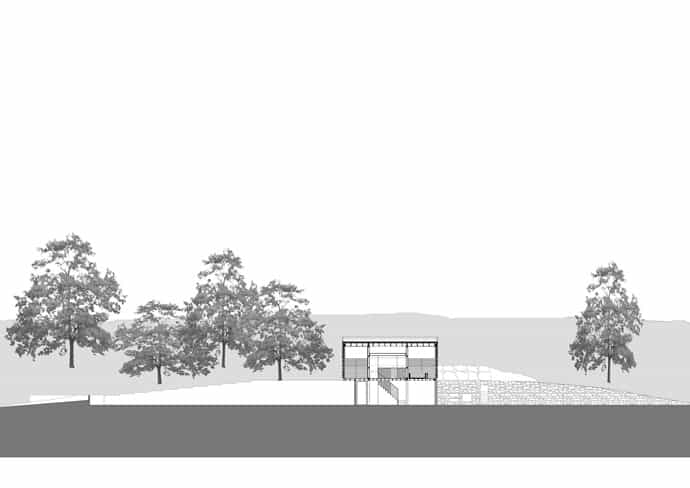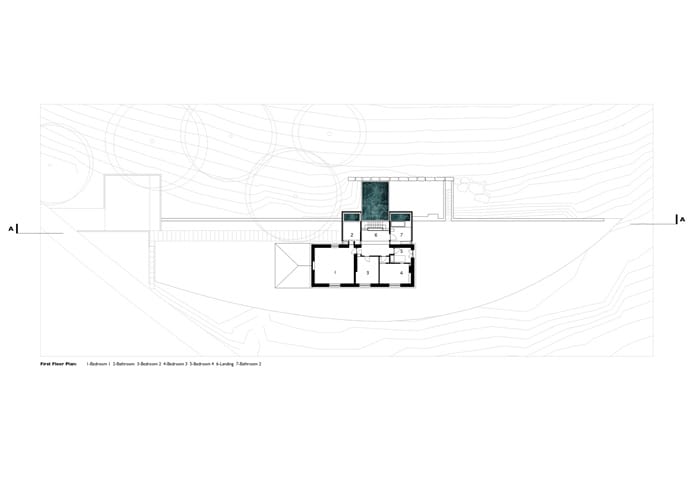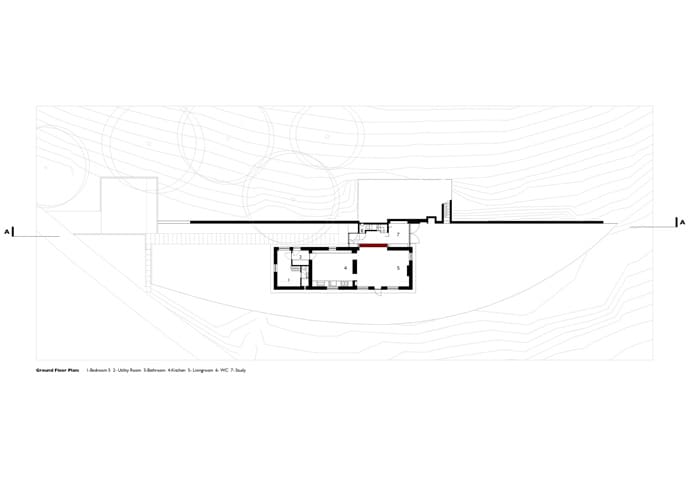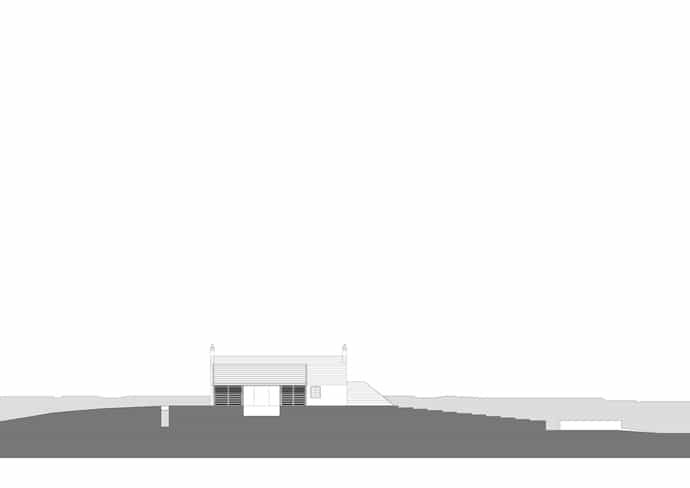Designed by Skene Catling de la Peña, the conversion of a former Dairy to a five-bedroom house with a small pool. The project sits in an 850 acre Estate in Somerset. Pragmatically the space was to be re-planned; lean-to sheds removed and an extension added to create a total of four to five bedrooms, three bathrooms, more generous circulation space with rooms of better proportions. The brief changed during the design; what was originally to be a letting property became a retreat for the Client; a place to escape the main Estate. It was to be discreet with the intervention to appear as a natural extension of the existing structure. The design set out to appear ‘un-designed’.
The design was to combine privacy and seclusion with openness to the wider landscape. The inspiration was both literal, in the stacked timber in the yard opposite, and literary, in the 18th century ‘La Petite Maison – An Architectural Seduction’, architectural treatise and erotic novella by Jean-Francois de Bastide.
The structure was built up of the prefabricated pieces on site. The glass blocks sit on rubber gaskets which in turn sit directly on the timber. A foam seal sits on the surface of the blocks to form a weatherproof movement joint, clear silicon forms a final weather seal. Pilkington donated the glass for the extension as this technique has not been used before.
Glass has been utilized in many different forms to reinforce the conceptual ‘serial unraveling’ of the house. Sensually, the laminated glass blocks form a watery barrier as structure and skin, sending refracted light around the bathing spaces allowing a sense of enclosure from, and connection to, the landscape outside. Instrument Glass, who produce lenses for scientific and military use, provided four ‘windows’ of low iron glass blocks for selected views out. Two-way mirror emulates the water in the bathing pool as a strip through the building, allowing views through two floors depending on relative light levels/the time of the day. Used at the entrance, it reflects the landscape at the approach to the house dematerializing the staircase and base of the building and making it appear transparent. It also forms a screen for the strip of light bulbs marking the main door. A pair of antique telescopes set into the two way mirrored wall construction, allow scrutiny of visitors to the house. Self-cleaning glass forms the screen to the pool, and the roof-light glazing.

